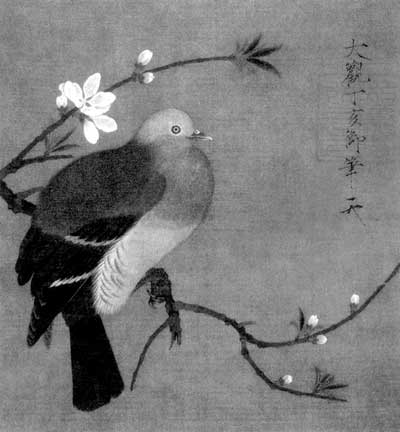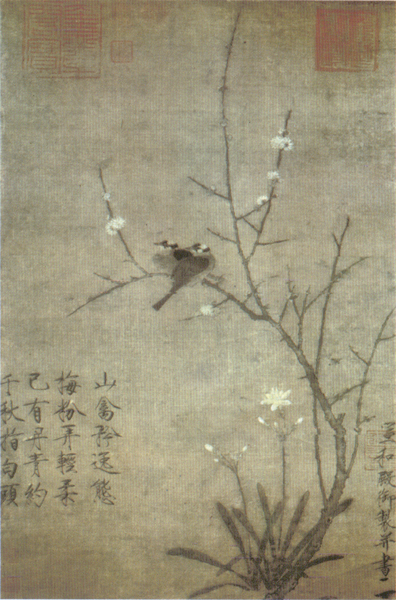The Imperial Painting Academy with
the most integral organization thrived in the Song Dynasty (960-1279). Both the
systems of subjects and examination of art education were quite mature. Along
with the development of economy, art education gained great achievements and
became the example of painting academy in Chinese history. Following their
masters, Huang Quan, Huang Jucai, Zhao Yuanchang and Gao Wen from the Western
Shu and Wang Qihan, Zhou Wenju, Li Zhaoqing, Gu Deqian from the Southern Tang
had become the core members of the painting academy of the Northern Song Dynsaty
(960-1127). Painting styles from the Western
Shu affected that of the painting academy in the
Northern Song Dynasty. Besides, Painters from the Central Plains and other
regions were invited to the palace. The imperial painting academy reached its
peak of development in the period from Zhao Ji's reign.
After succeed to the throne, Zhao Ji
(1082-1135) was fatuous and incompetent. However, he was
well known as an excellent painter and calligrapher and his stress on painting
academy made important contribution to Chinese painting. The entry examination for the painting academy was included in the
imperial civil service examination system in 1004. The painting examination
contained six subjects, including Buddhist painting, figure painting, landscape
painting, bird-and-beast painting, flower-and-bamboo painting, house-and-tree
painting and even drawing pictures based on ancient poems. Ranks were determined
by their grades. Painters of different subjects lived in different places and
were trained respectively and often checked. Painters' status was promoted
prominently and they gained comparably high salary. Stimulated by attractive
salary and the emperor's care, creation of painting academy flourished. Artistic
collections also became abundant. Xuanhe Shupu and Xuanhe Huapu
compiled under Zhao Ji's instruction collected calligraphic works and paintings
in the palace. They are important materials for research on history of ancient
painting. The style of Zhao Ji was inclined to bold and unrestrained rather than
meticulous, thus some works with his signature might have been drawn by his
imperial painters. Only the Four Fowls in
The Nelson-Atkins Museum of Art in
America and the Willow and Crow collected by Shanghai
Museum was confirmed to be his works. Both are ink and wash with simple
strokes.
Along with the downfall of the
Northern Song Dynasty, the prosperous Xuanhe Painting
Academy was finished. After roundabout trip some painters of the academy
escaped to Lin'an, the capital of the Southern Song Dynasty (1127-1279) and
became core members of the painting academy in the Southern Song Dynasty. Their
positions in the academy were resumed gradually.


